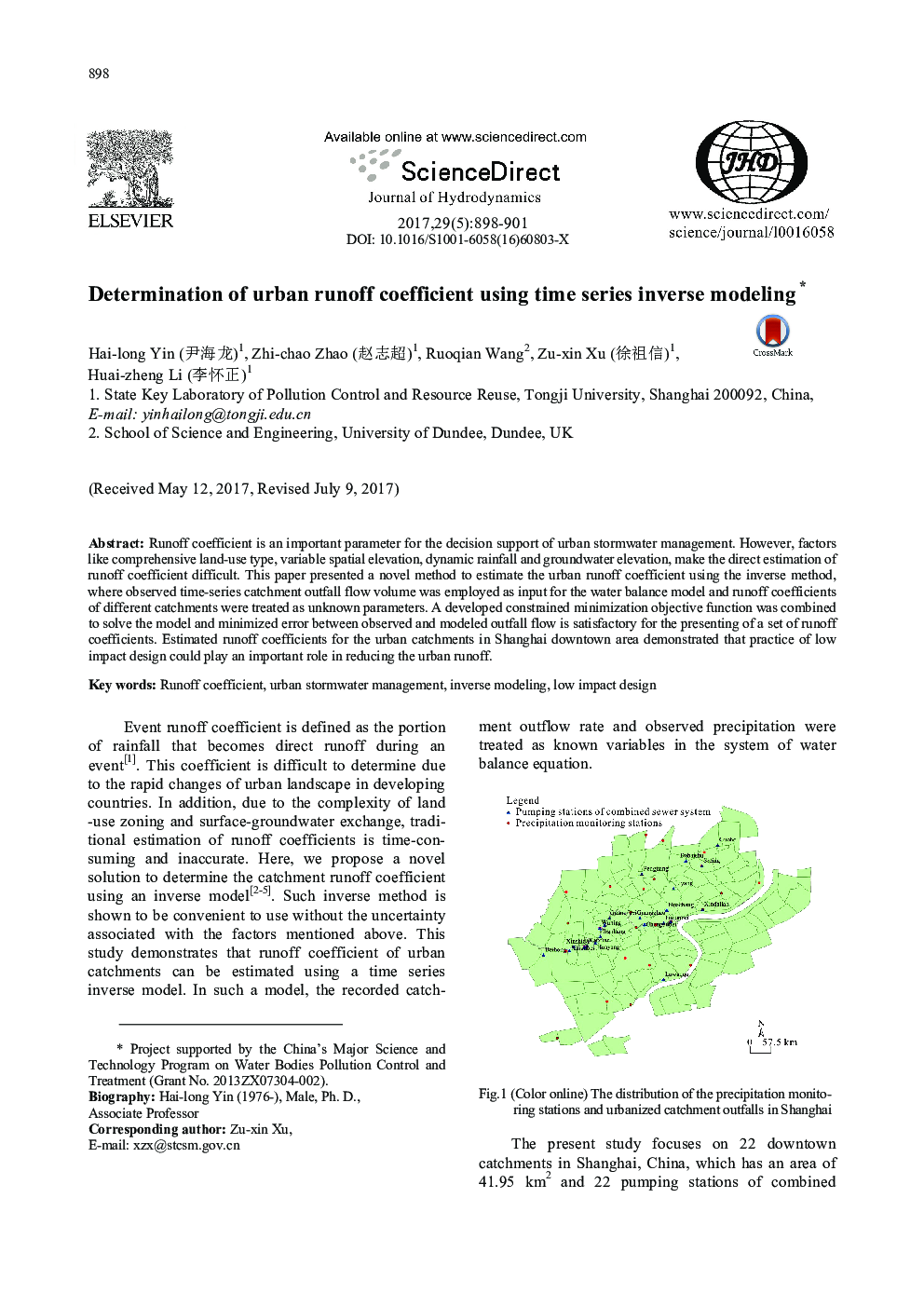| Article ID | Journal | Published Year | Pages | File Type |
|---|---|---|---|---|
| 5473590 | Journal of Hydrodynamics, Ser. B | 2017 | 4 Pages |
Abstract
Runoff coefficient is an important parameter for the decision support of urban stormwater management. However, factors like comprehensive land-use type, variable spatial elevation, dynamic rainfall and groundwater elevation, make the direct estimation of runoff coefficient difficult. This paper presented a novel method to estimate the urban runoff coefficient using the inverse method, where observed time-series catchment outfall flow volume was employed as input for the water balance model and runoff coefficients of different catchments were treated as unknown parameters. A developed constrained minimization objective function was combined to solve the model and minimized error between observed and modeled outfall flow is satisfactory for the presenting of a set of runoff coefficients. Estimated runoff coefficients for the urban catchments in Shanghai downtown area demonstrated that practice of low impact design could play an important role in reducing the urban runoff.
Related Topics
Physical Sciences and Engineering
Engineering
Ocean Engineering
Authors
Hai-long (尹海é¾), Zhi-chao (èµµå¿è¶
), Ruoqian Wang, Zu-xin (å¾ç¥ä¿¡), Huai-zheng (æææ£),
